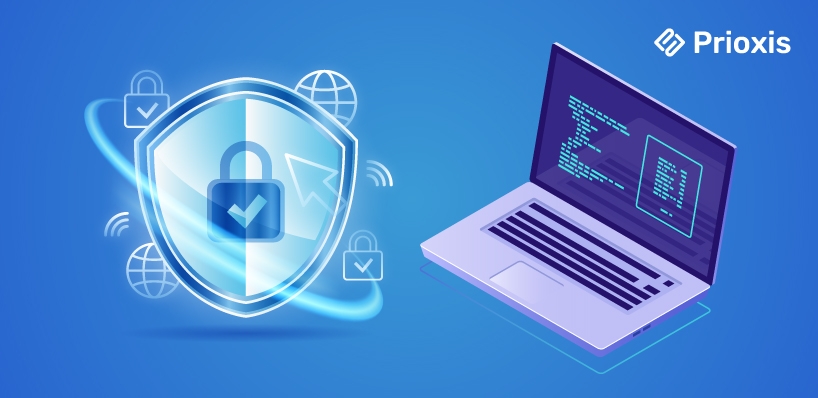
Table of Content
Let's go back to 2009, when a software engineer named Ryan Dahl saw the limitations of traditional server-side platforms (Apache HTTP Server and Ruby on Rails).
That is when he created an innovative solution built on top of Google's V8 JavaScript engine, known as Node.js. And the rest is history. Today, Node.js is the most popular web framework, with 46.31% of professional developers using it.
Over the years, NodeJS Development Services has been updated with different features, like the introduction of npm, the establishment of the Node.js Foundation, and the merging of Node.js and io.js.
To unlock the full potential of this framework, it is important to learn the Node JS Best Practices. In this blog, you will learn the top Node.js best practices that every developer should know.

Most of the risks and attacks that can occur in Node.js applications involve malicious actors bypassing user authentication. To avoid this, Node.js Developers must follow these authentication guidelines
If you want to have a comprehensive understanding of your Node.js application, logging and monitoring are two of the most important Node JS best practices. By monitoring your logs, you can identify anything suspicious within your application. Important levels to log are info, error, warn, and debug.
You can use frameworks like Winston or Bunyan to log information, including errors, request details, and system metrics. For monitoring your application, you can use application performance monitoring (APM) tools.
Dependencies refer to external modules or packages that are needed for NodeJS Development Services to function correctly. These dependencies are important components that provide added functionality to the application.
You must manage dependencies properly to ensure the stability, compatibility, and security of your application. This can be done by installing only crucial packages and avoiding unnecessary coupling between modules. You can use tools like npm and yarn for this.
Secure deserialization is important because Node.js does not offer forms of object serialization. This allows attackers to use serialized objects to transfer malicious payloads. To avoid this, you must implement integrity and user authentication checks to validate the data. Also, sanitize desterilized data to remove any harmful content.
Node.js Developers can also utilize anti-CSRF tokens, custom request headers, the SameSite flag in cookie sessions, and user interaction-based protection for enhanced security.
Setting up HTTPS ensures secure communication between clients and the server. HTTPS (Hypertext Transfer Protocol Secure) encrypts data transmitted over the network, providing confidentiality and authenticity.
Steps to set up HTTPS are:
If you run node.js with root access, you open the door to malicious actors that can attack you unexpectedly. This is why you can run it as a non-root user. This ensures that Node.js operates on the principle of least privilege (people only have access that is needed to perform a specific job.)
Additionally, this allows for more control over permissions and access rights, enabling a secure and robust application environment.
The event loop is a continuous running loop that processes asynchronous tasks and events, ensuring that the main thread is not blocked. Blocking event loop can occur when a piece of synchronous code or long running operation prevents event loop from processing other tasks.
This leads to slow server response times, unresponsiveness, and reduced throughput. To avoid blocking the event loop, ensure your JavaScript callbacks complete quickly. Avoid synchronous operations like synchronous file I/O, infinite loops, or CPU-intensive tasks.
You can also bound the input for complex tasks. A bound input can ensure no blocking as it executes against the time-frame of your worst-case input.
A Denial of Service (DoS) attack is a cyber-attack where the attacker floods the production server with internet traffic, making a resource or network unavailable to its intended user.
One way Node.js Developers can avoid this attack is by limiting request sizes. The default limit for requests in Node.js is 5MB. You can further reduce the size by;
The body-parser package enables you to parse incoming request bodies. By configuring the 'limit' option in body-parser, you can restrict the size of payloads your application will accept.
This approach enforces size limits for specific types of content. By setting size limits at the proxy or middleware level, you can control the maximum size of incoming requests based on content type or other criteria.
You can ensure application performance and mitigate security issues by implementing error handling practices. Here are some of them:
Cross-Site Scripting (XSS) is a major security threat that can affect your Node.js application. It is a type of security vulnerability that occurs when an attacker injects malicious scripts into a trusted website.
To protect your application from this threat, you need to enhance security by validating user input. For this, you can use tools like DOMPurify to remove potentially malicious content, such as scripts or HTML tags, before processing user input.
Plus, you can incorporate form validation libraries like express-validator to automate the validation of user input in requests. You can also employ context-dependent output filters, like XSS filters. A XSS filter encodes user input based on the context in which it will be displayed.
Node.js offers a powerful and efficient solution, but ensuring your application is secure, high-performing, and adheres to industry best practices can be challenging.
As a NodeJS development company, we understand your challenges and are here to help. Our dedicated development team of Node.js experts specializes in crafting feature-rich, responsive online applications that are tailored to your unique business needs.
Get in touch